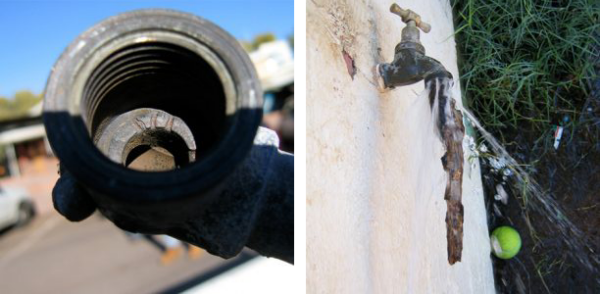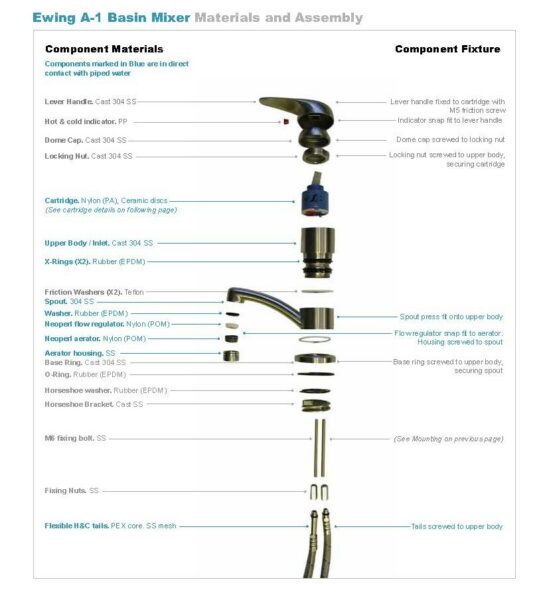FROM THE ARCHIVES: R&D – Finding and Specifying Better Taps
An archive highlight from 2010 showing the ongoing pursuit of finding the best possible taps to specify in housing.
Project data shows that taps are performing poorly. Poorly performing taps impact on the ability of households to maintain personal hygiene which can adversely affect health.
This Research & Development project, ‘Flick Mixer Product Analysis for use in Remote Indigenous Communities’, aimed to identify longer lasting and better quality tap ware to inform the best possible specifications for housing to continue to improve health. The project also proves as a demonstration of a product research approach to specifications.
Such an approach should inform how architects, designers, building companies go about hardware selections, if not use the report findings directly to inform their schedules.
The Problem
A house may have twenty taps or valves, including two shower taps, two basin taps, two laundry tub taps, two washing machine taps, two yard taps, a toilet cistern stop tap and cistern valve, two bath taps, two kitchen taps, a hot waster system relief valve, stop valve and cold water relief valve and a main house isolation valve. If any of these taps do not work, residents will be less able to carry out the Healthy Living Practices.
One dripping tap can waste up to 600 litres of water a day and hot water lost through leaking taps can increase the household energy bill. If many taps are leaking in a community water system, the water supply and waste water systems will have extra load placed on them and a valuable resource wasted.
Traditional jumper valve taps are subject to washers leaking, dripping, wearing out in a short time, handles coming off, washers breaking, dezincification, corrosion, calcification and pitting of the tap seats. These are very common and very well documented tap failures.

Common tap failures: Leaking Jumper Valve (LHS), Attempted fix of leaking tap with timber stake
The Trial (See here)
Reverse engineering analysis was conducted on six existing commercial flick mixer type taps. The taps selected for the analysis were models specified throughout NT housing at the time, models used in high use public environments such as McDonald’s Restaurant toilets and the cheapest available on the market.
Each product was analysed and compared based on:
- product assembly methods
- materials used and suitability
- parts access, serviceability and maintenance
- cartridge quality
- mounting systems
- overall product rating
This project provides a demonstration of a product research approach to be implemented when making purchase and specification decision for remote Indigenous housing.
Findings & Recommendations
- Anecdotal evidence indicated that often the entire mixer is replaced and thrown away instead of only a faulty part
- Community wide use of the same tapware will facilitate better servicing and maintaining of these products
- Implement an ongoing product research approach and method to ensure reliable performance of hardware
- Based on the investigation, the recommended models in order or recommendation are:
- Nordic mixer $ 236.35 – Caroma Dorf Industries, 4 Ray Road, Epping, NSW 2121, Ph: (02) 9202 7000
- Ewing A1 + A3B mixer $ 307.25 – Ewing, 4/24 Deakin Street, Brendale, QLD 4500, Ph: (07) 3205 6099
- Hansa Polo mixer $ 318.25, – Starion Industries, 7 Eagleview Place, Eagle Farm, Qld 4009, Ph: 1800 060 875
- Establish and develop an ongoing relationship with manufacturers in order to improve on existing market offerings for this specific market segment
Download the very informative and in-depth report here.
Read more about B1.3 Water outlets, valves & taps in The Guide.
Active research and development has been an integral part of Housing for Health projects over the past 20 years as a way to find better solutions. The gathering of data and rigorous testing and analysis of products allows Healthabitat to test ideas, trial better solutions and change the dialogue around parts of a house.
Healthabitat continues to welcome collaborations to not only find better solutions for Health Hardware, but to also change the dialogue around decision making when it comes to housing for health.










